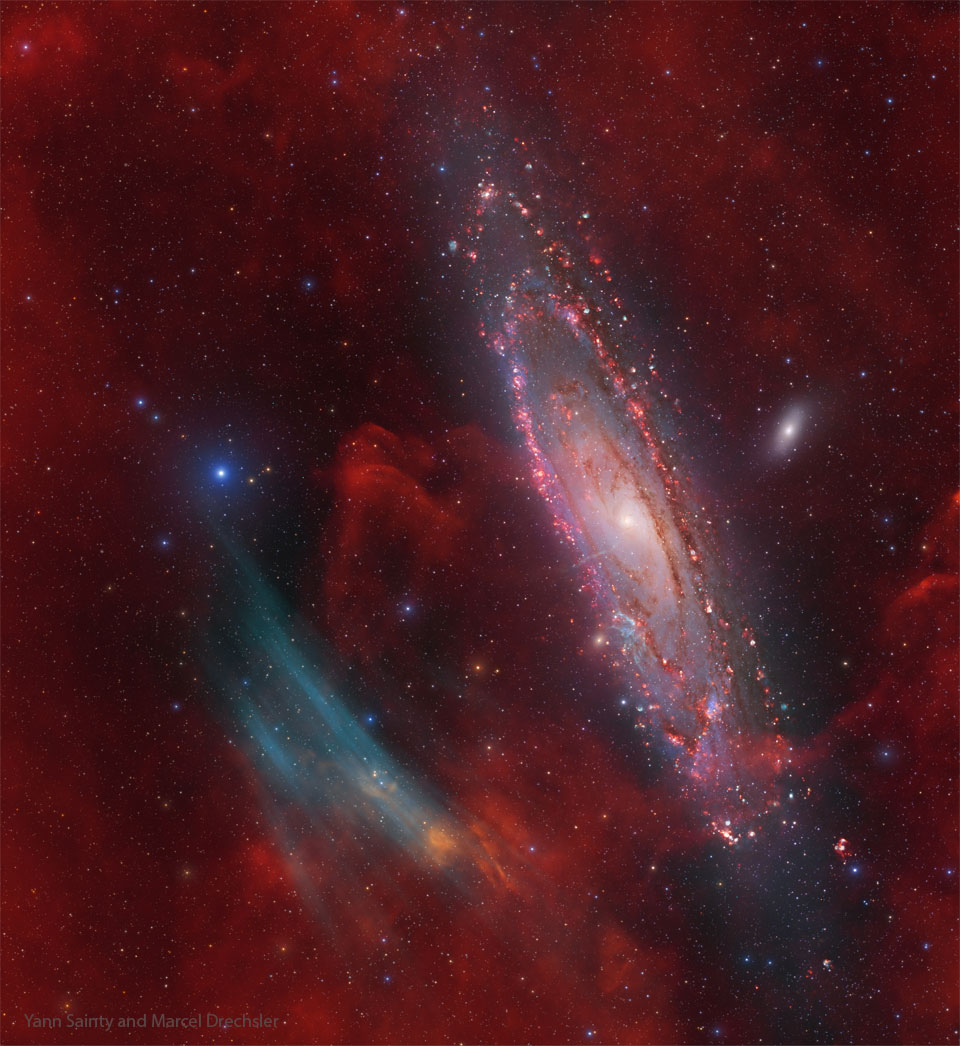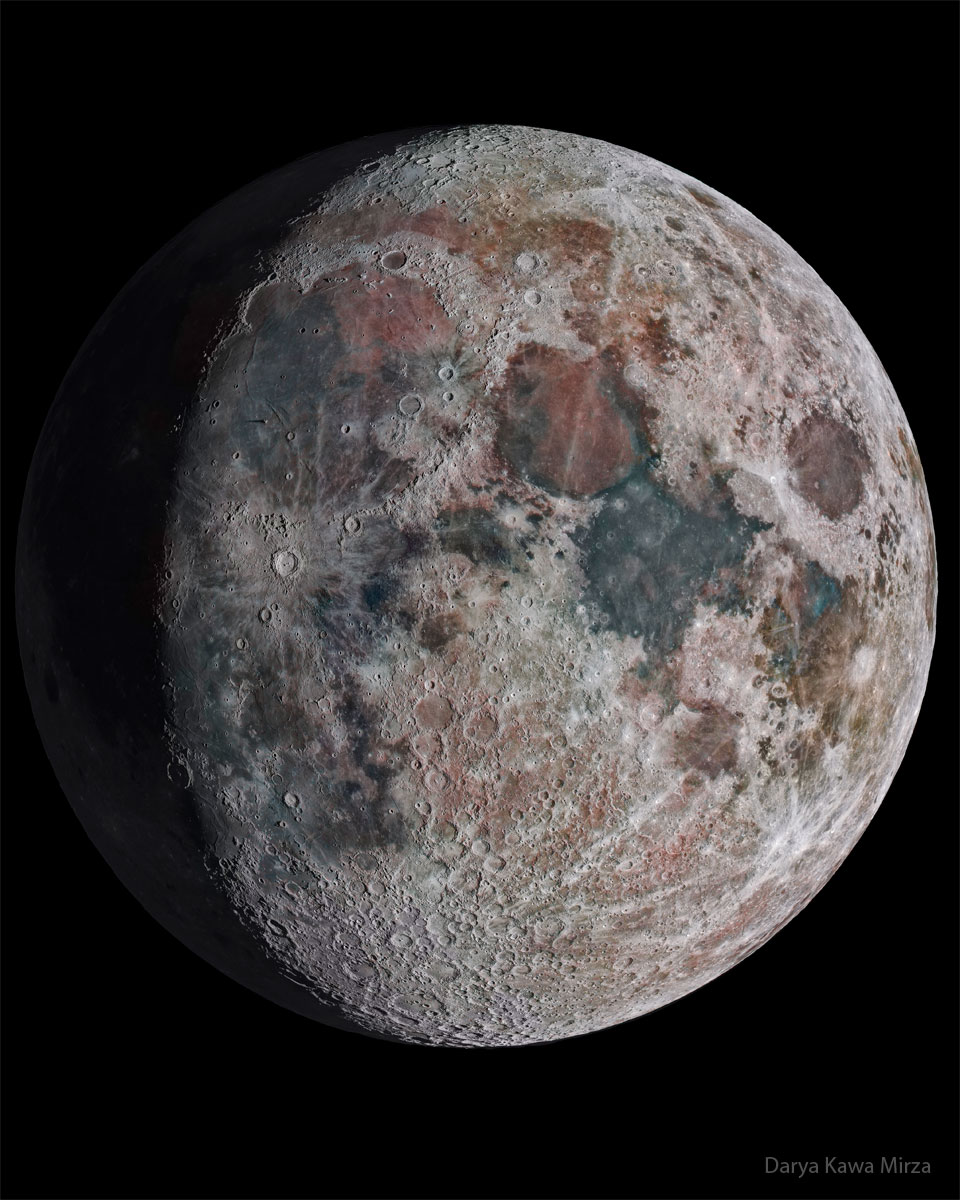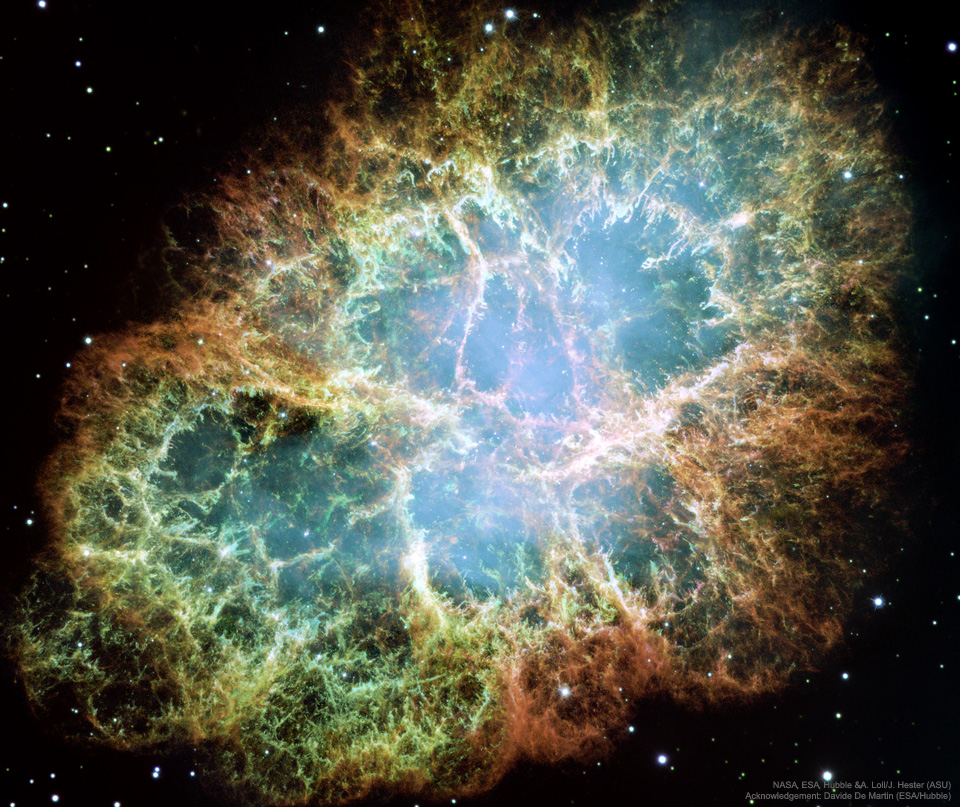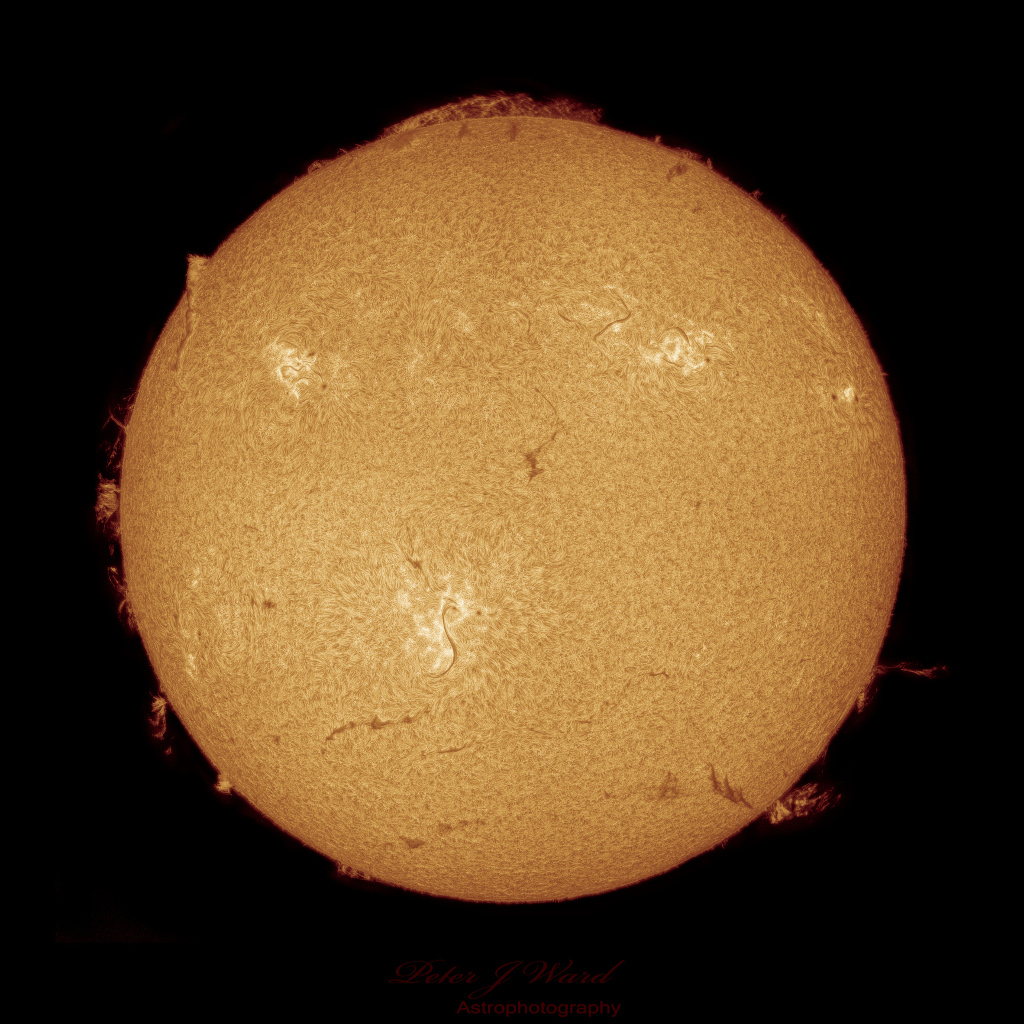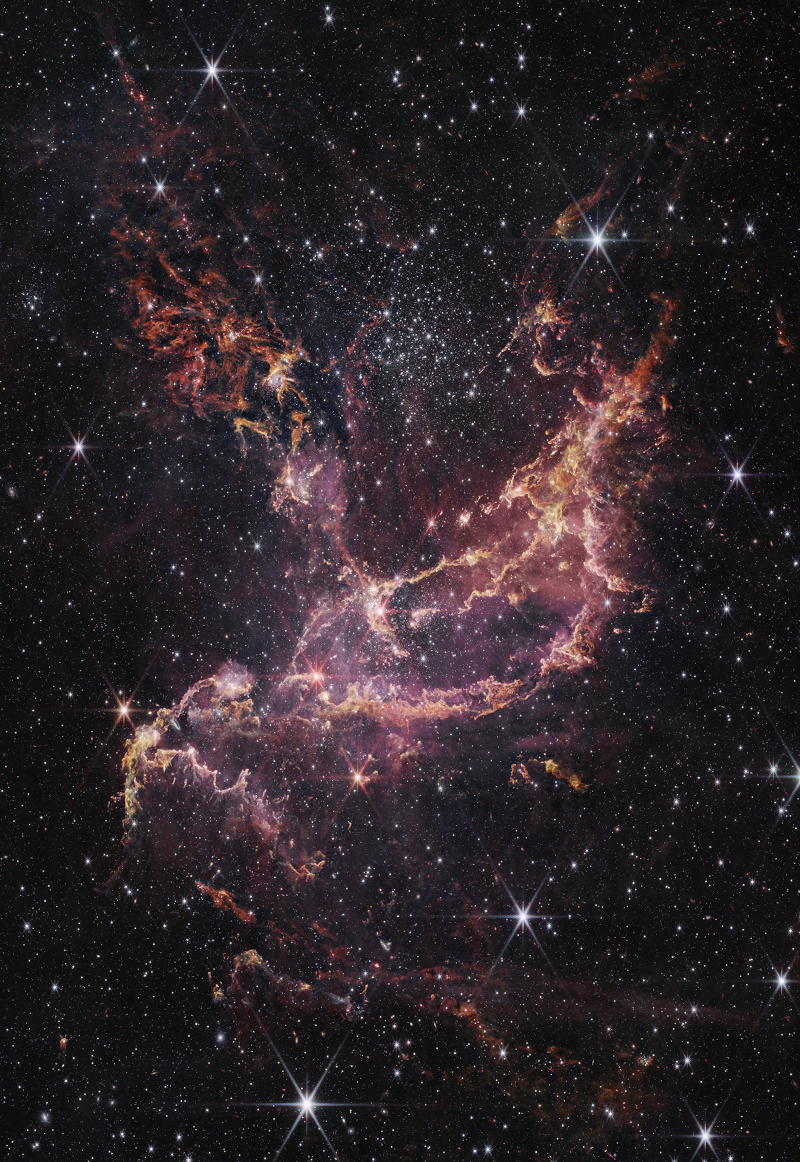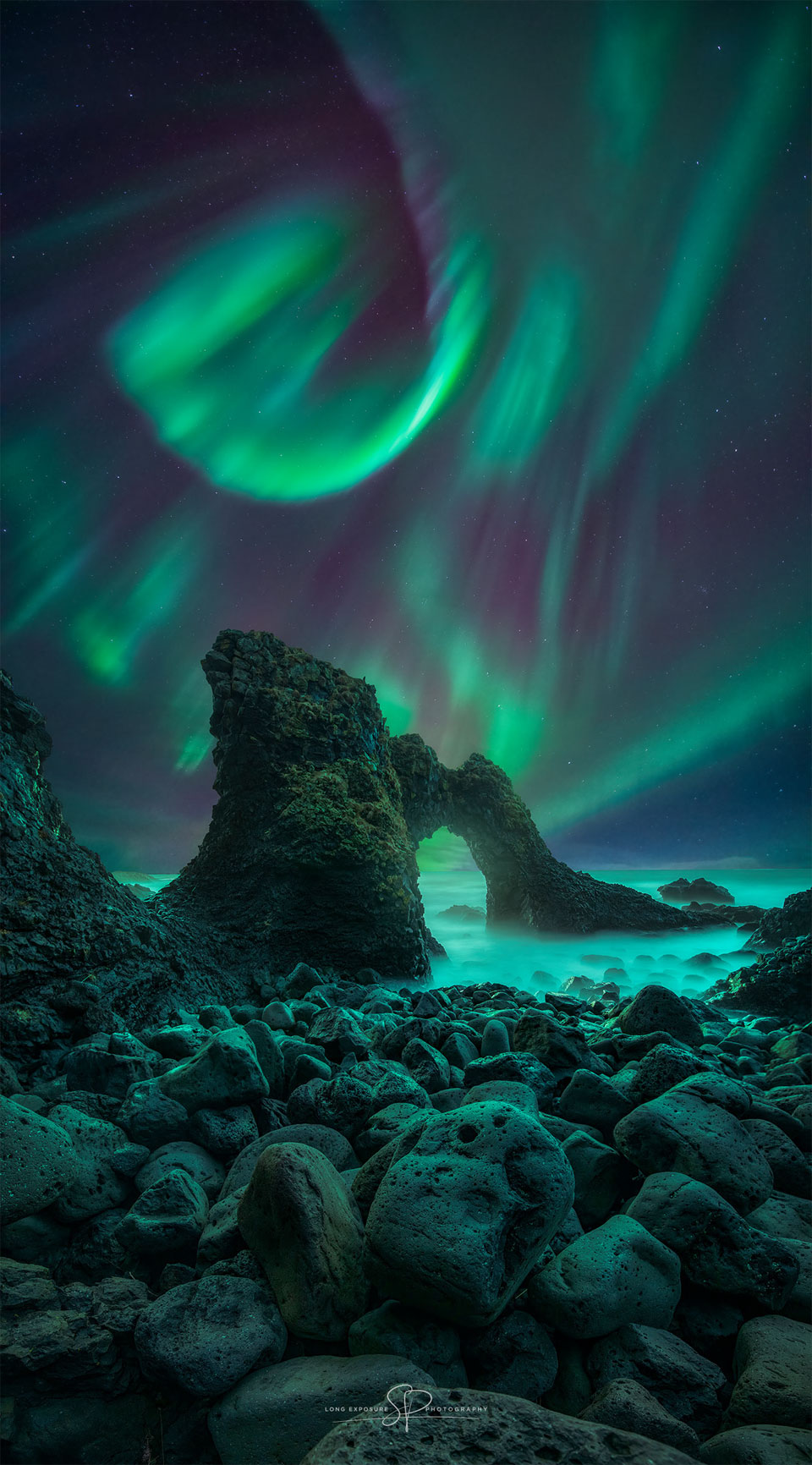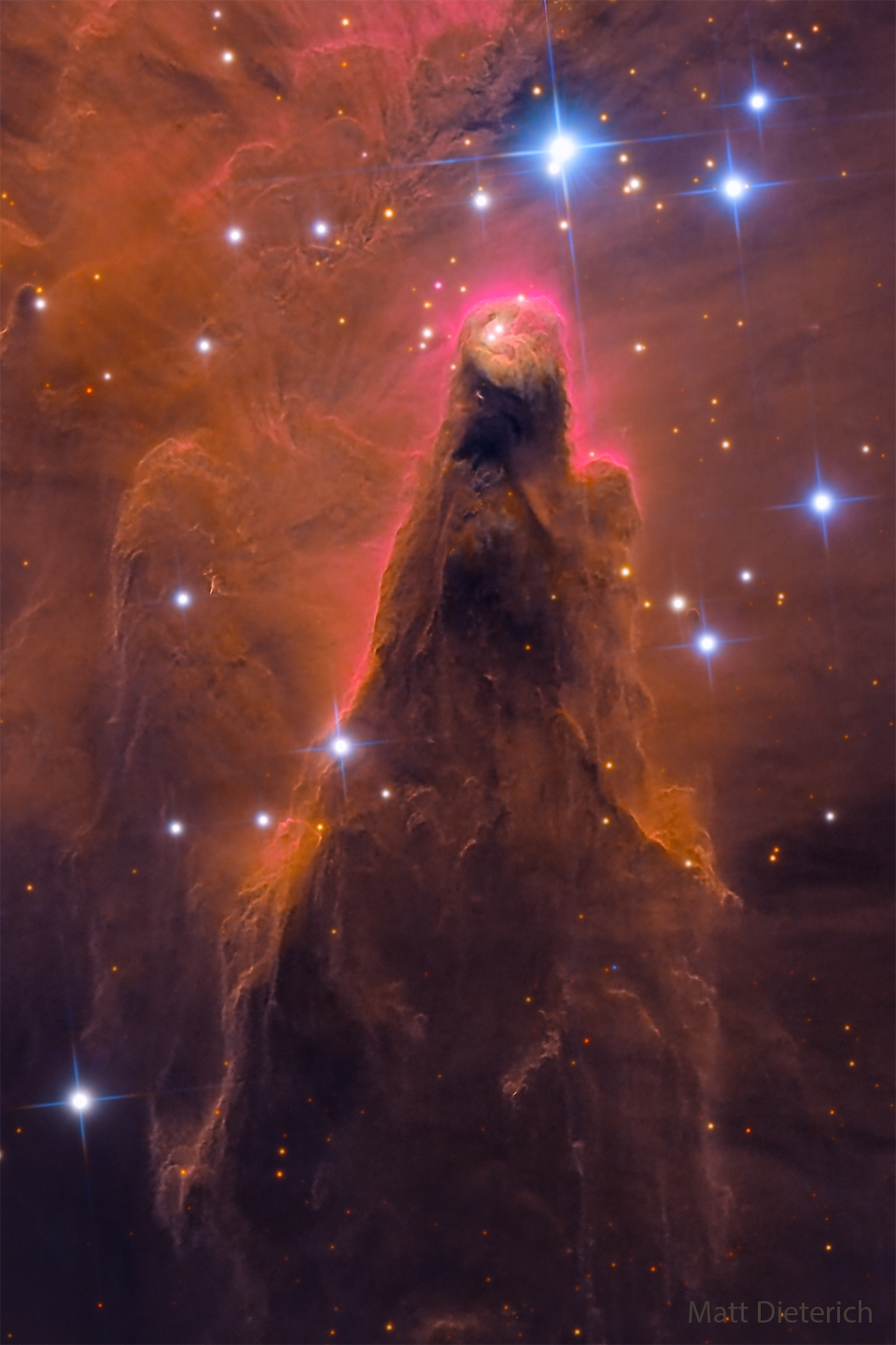
Gravitational lensing by the galaxy cluster MACS0647 — in which the massive foreground cluster distorts and lenses the light emitted by distant background galaxies along the line of sight — is on vivid display here in this recent multi-color infrared image from the James Webb Space Telescope (JWST). In particular, the background source MACS0647-JD is seen to be lensed three times by the cluster. When first discovered with the Hubble Space Telescope, MACS0647-JD was observed as an amorphous blob. With Webb though, this single source is revealed to be a pair or small group of galaxies. The colors of the MACS0647-JD objects are different as well — indicating differences potentially in the age or dust content of these galaxies. These new images provide rare examples of galaxies in an era only a few 100 million years after the Big Bang. via NASA https://ift.tt/cUGo8H7
